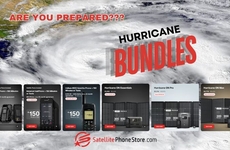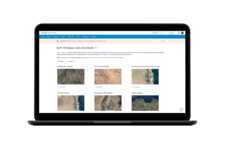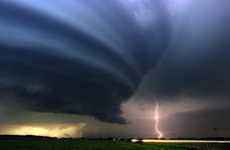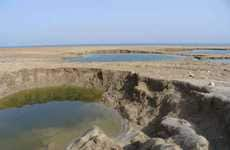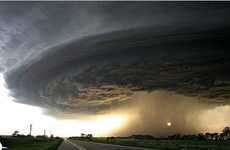
10 Killer Storm Photos
karl burkart — September 6, 2008 — Eco
References: nature-spot
With three killer storms about to hit the southeast coast, Hurricane Hannah, Hurricane Ike, and Josefina, we are all reminded that times (and weather patterns) have changed. These remarkable photos were taken by Mike Hollingshead, a native of Nebraska who is both brave and talented. Visit his site to see more amazing photos and a wealth of links to storm chasing bloggers.
Recent hurricane modeling has found that that hurricanes, simulated under warmer, high CO2 conditions, are more intense than under present-day conditions. Thomas Knutson and Robert E. Tuleya of the NOAA stated in 2004 that warming induced by greenhouse gas may lead to increasing occurrence of highly destructive category-5 storms.
Other scientists have found that wind shear, the increase of which acts to inhibit tropical cyclones, also changes in model-projections of global warming. There are projected increases of wind shear in the tropical Atlantic and East Pacific associated with the deceleration of the Walker circulation, as well as decreases of wind shear in the western and central Pacific.
Recent hurricane modeling has found that that hurricanes, simulated under warmer, high CO2 conditions, are more intense than under present-day conditions. Thomas Knutson and Robert E. Tuleya of the NOAA stated in 2004 that warming induced by greenhouse gas may lead to increasing occurrence of highly destructive category-5 storms.
Other scientists have found that wind shear, the increase of which acts to inhibit tropical cyclones, also changes in model-projections of global warming. There are projected increases of wind shear in the tropical Atlantic and East Pacific associated with the deceleration of the Walker circulation, as well as decreases of wind shear in the western and central Pacific.
Trend Themes
1. Climate Change-induced Storm Intensity - Opportunity for businesses to develop innovative technologies and strategies to mitigate the increasing intensity of storms caused by climate change.
2. Hurricane Modeling and Simulation - Disruptive innovation potential in the development of advanced hurricane modeling and simulation tools to accurately predict and prepare for highly destructive storms.
3. Wind Shear Effects on Tropical Cyclones - Opportunity for industries to explore ways to mitigate the impact of changing wind shear patterns on tropical cyclones, potentially leading to disruptive innovations in storm response and prevention.
Industry Implications
1. Environmental Technology - Innovations in environmental technology industry can help combat climate change and develop sustainable solutions for storm mitigation and adaptation.
2. Insurance - Insurance industry can leverage advanced hurricane modeling and simulation tools to accurately assess risk and develop tailored policies for areas prone to highly destructive storms.
3. Emergency Management - Opportunity for the emergency management industry to adopt disruptive technologies and strategies to enhance storm response capabilities and minimize the impact of changing wind shear patterns on tropical cyclones.
5.3
Score
Popularity
Activity
Freshness


